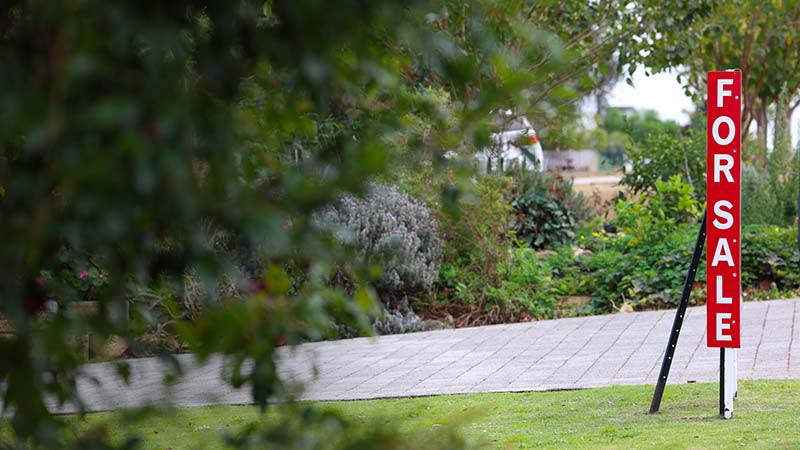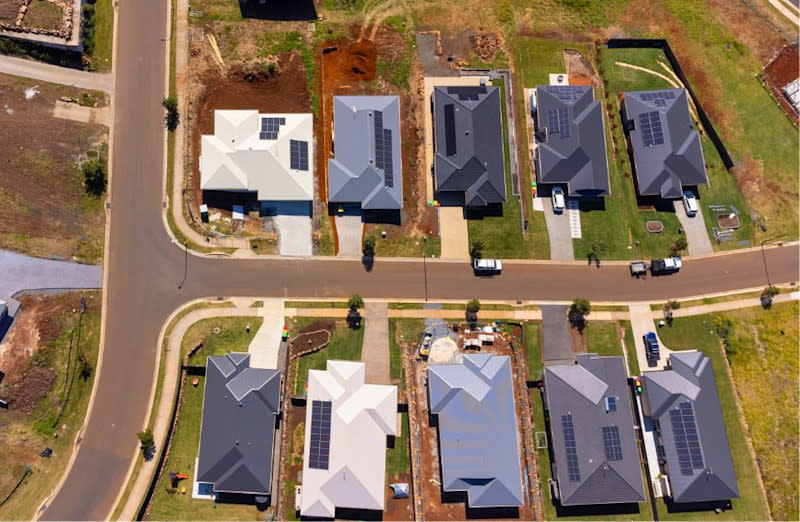Melbourne Bucks Home Values Trend as Approvals Rise

Melbourne’s property market recorded the steepest decline among Australian capital cities last month when home values fell 0.6 per cent.
It puts Melbourne’s median home value at $772,317, a 3.3 per cent decrease over the past year and a 6.9 per cent fall from its peak in March of 2022.
While the national property landscape remained relatively stable with a marginal decline of 0.03 per cent for January, Melbourne’s pronounced downturn has prompted varied forecasts from leading economists.
AMP chief economist Shane Oliver said Australian home prices were “likely to see further near-term softness as high interest rates constrain demand”.
“Lower rates should help from mid-year, and we see home prices rising around 3 per cent in 2025,” Oliver said.
Oliver Hume chief economist Matt Bell highlighted Melbourne’s shrinking affordability gap with other markets and ongoing population growth as positive indicators.
“Victoria, the country’s largest land market, has fared the worst of all land markets as interest rates rose. We think there is more upside to this market than any other land market in the country,” Bell said.
Judo Bank economists Matthew De Pasquale and Warren Hogan said that recent employment figures and wage data supported a more cautious approach to rate cuts.
“Our interpretation of the data available is that the economy remains on solid footing and that there is no clear urgency to enter a cutting cycle,” they said.
The national landscape shows striking contrasts between city and country markets.
CoreLogic research director Tim Lawless said that “regional markets seem to be benefitting from a second wind of internal migration, along with an affordability advantage in some markets, and what looks to be some permanency in hybrid working arrangements across some occupations and industries”.
Regional areas had a 0.4 per cent increase in January, reaching record highs, while capital cities collectively declined 0.2 per cent.

Among other capitals, Sydney recorded a modest 1.7 per cent annual gain, while Perth showed remarkable strength with a 17.1 per cent increase.
National annual growth in home values has diminished from a cyclical peak of 9.7 per cent in February of 2024 to 4.3 per cent in January.
Sales volumes have declined from a cyclical high of 535,000 in October to 526,000 in January but Lawless said that might soon change.
“Lower mortgage rates and a subsequent lift in borrowing capacity as well as an under supply of newly built housing could be setting the foundations for a relatively shallow housing downturn,” Lawless said.
The decline aligns with broader market trends from late 2024, when CoreLogic data showed national home values entered negative territory in December.
While Perth surged 19.1 per cent over the year and Adelaide rose 13.1 per cent, Melbourne recorded a 3 per cent decline, marking it as one of only three capitals to fall.
At the time, Lawless attributed this broader slowdown to “affordability constraints weighing on buyer demand and advertised supply levels trending higher”.
According to the CoreLogic report, any recovery will likely be measured.
“The easing cycle for interest rates is likely to be a gradual one and we also have the ongoing headwinds of affordability constraints, normalising population growth and generally soft economic conditions to contend with,” the report said.
For Melbourne’s property sector, while the immediate outlook remains challenging, some areas such as Dandenong and Casey North have maintained modest growth.
Bell remains optimistic about the broader outlook.
“With rate cuts now widely expected to commence in February 2025 and deliver three or four cuts throughout the calendar year, most house price forecasts of continued house price growth in 2025 are looking pretty good.”
Approvals nudge up across 2024
Meanwhile, as prices for existing homes go up they improve the feasibilities for new builds, which have been struggling with rising labour and material costs.
Home approvals rose 4.7 per cent year-on-year for 2024, according to data released on Monday.
In original terms, a total of 171,394 homes were approved across the 2024 calendar year, up on the 163,722 homes approved in 2023, according to the Australian Bureau of Statistics.
And 59,312 private sector homes excluding houses were approved in the 2024 calendar year, compared with 60,116 in 2023, a 1.3 per cent fall.
Home approvals edged up in December, rising 0.7 per cent during the month to 15,174 homes after a 3.4 per cent fall in November, the bureau said.
Bureau head of construction statistics Daniel Rossi said the overall rise in December had been driven by 15.2 per cent growth in private homes excluding houses.
Approvals for private sector houses fell for the third straight month, down 3.0 per cent, he said
New South Wales was the only state with growth in private sector house approvals in December—a 2.9 per cent rise.
The 3 per cent drop in private sector house approvals across Australia to 8715 homes follows a 1.7 per cent fall in November, to be 1.8 per cent lower than December of 2023.
In original terms, 108,167 private sector houses were approved, across the 2024 calendar year. This was a 7.3 per cent rise from 2023 where 100,769 private sector houses were approved.
Private sector homes excluding houses rose 15.2 per cent to 6209 homes after a 10.4 per cent fall in November. The rise in December was driven by large apartment approvals in NSW and Queensland, which pushed this category 42.7 per cent higher than one year ago.

In December, the value of total building approved grew 3.5 per cent to $14.94 billion after a 6.6 per cent rise in November.
Total residential building value fell 0.9 per cent to $8.32 billion. This was made up of a 0.5 per cent drop in the value of new residential building approved ($7.22 billion), and a 3.7 per cent fall in alterations and additions ($1.11 billion).
The value of approved non-residential building rose 9.7 per cent to $6.61 billion, after a 17.8 per cent rise in November.
In original terms, across the 2024 calendar year $162.3 billion of building work was approved, compared with $160.3 billion in 2023, a 1.2 per cent rise.
The Property Council of Australia said that although it was pleasing to see home approvals rise in 2024, “we need to see a bigger increase to guarantee success in our housing goals”.
Property Council group executive policy and advocacy Matthew Kandelaars said the current rate fell short of what is required.
“We have an ambitious target of 1.2 million new homes, and sadly we still have plenty of work to do to get on course for success,” Kandelaars said.
“While we may not be quick off the starting blocks ... we need to see increases every month.
“Apartments take nearly three years to go from approval to construction and have volatile approval patterns. Despite their key role in easing the housing crisis, we have seen approval rates for apartments fall in 2024.
“We must consider the factors impacting project feasibility that stop approvals from progressing to commencement, and then completion.”














